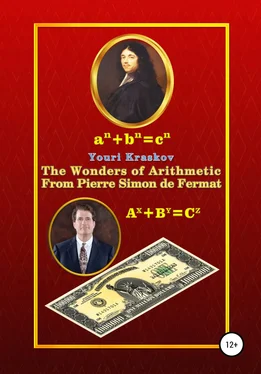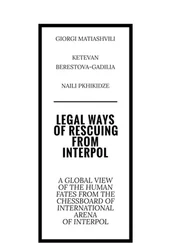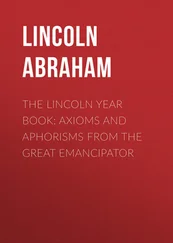Here is how E. Wiles himself comments on a mistake found in his “proof” in 1993: “Even explaining it to a mathematician would require the mathematician to spend two or three months studying that part of the manuscript in great detail”. See Nova Internet Publishing http://www.pbs.org/wgbh/nova/physics/andrew-wiles-fermat.htmlIt turns out that this "proof" understood only by its author, while everyone else needs to learn and learn.
Such debunks are very detailed, but too redundant since the arguments of the main authors of the FLT “proof” by G. Frey and E. Wiles look so ridiculous that otherwise as by the hypnotic influence of the unholy it would impossible to explain why many years after 1995 for some reason none of the recognized pundits so have ever noticed that instead of FLT proof we have got a something completely different.
Similarly, to the example from Pythagoras 3 2+4 2=5 2Euler found a very simple and beautiful example of adding powers: 3 3+4 3+5 3=6 3. For other examples, see comment 22 in Pt. 2.
For example, the task of the infinity of the set of pairs of twin primes or the Goldbach task of representing any even natural number as the sum of two primes. And also, the solution to the coolest problem of arithmetic about an effective way to calculate prime numbers is still very far from perfect despite the tons of paper spent on research on this problem.
In particular, Edwards in his very voluminous book [6, 38], was not aware of the fact that Gauss solved the Fermat's task of decomposing a prime number type 4n + 1 into a sum of two squares. But it was this task that became a kind of bridge to the subsequent discovering the FLT. Fermat himself first reported it in a letter to Blaise Pascal on 09/25/1654 and this is one of the evidences that of all his scientific works, the FLT is really his last and greatest discovery.
The main and fundamental difference between Fermat's methods and the ones of other scientists is that his methods are universal enough for a very wide range of problems and are not directly related to a specific task. As a rule, attempts to solve a problem begin with trial calculations and enumeration of all possible options and those who think faster get correspondingly more opportunities to solve it. Fermat has another approach. He makes trying only for the purpose of bringing them to some universal method suitable for the given task. And as soon as it him succeeds, the task is practically solved and the result is guaranteed even if there is still a very large amount of routine calculations ahead. See for example, comment 30 in Pt. 2.
The original solution to the Diophantus' task is as follows. “Let it be necessary to decompose the number 16 into two squares. Suppose that the 1st is x 2, then the 2nd will be 16-x 2. I make a square of a certain number x minus as many units as there are in site of 16; let it be 2x-4. Then this square itself is 4x 2–16 x+16. It should be 16-x 2. Add the missing to both sides and subtract the similar ones from the similar ones. Then 5x 2is equal to 16x and x will be equal to 16 fifths. One square is 256/25 and the other is 144/25; both folded give 400/25 or 16 and each will be a square” [2, 27].
If c 2= p 2N 2and p 2(as well as any other p i 2of prime factors c) does not decomposed into a sum of two squares i.e. p 2=q 2+r where r is not a square then c 2=p 2(q 2+r)=(pq) 2+p 2r and here in all variants of numbers q and r it turns out that p 2r also is not a square then the number c 2also cannot be the sum of two squares.
This discovery was first stated in Fermat’s letter to Mersenne dated December 25, 1640. Here, in item 2-30 it is reported: “ This number (a prime of type 4n+1) being the hypotenuse of one right triangle, its square will be the hypotenuse of two, cube – of three, biquadrate – of four etc. to infinity ". This is an inattention that is amazing and completely unusual for Fermat, because the correct statement is given in the neighbor item 2-20. The same is repeated in Fermat’s remark on Bachet’s commentary to task 22 book III of Arithmetic by Diophantus. But here immediately after this obviously erroneous statement the correct one follows: “ This a prime number and its square can be divided into two squares in only one way; its cube and biquadrate only two; its quadrate-cube and cube-cube only three, etc. to infinity " (see Pt. 3.6). In this letter Fermat apparently felt that something was wrong here, therefore he added the following phrase: “ I am writing to you in such a hurry that I do not pay attention to the fact that there are errors and omit a lot of things, about which I tell you in detail another time ”. This of course, is not that mistake, which could have serious consequences, but the fact is that this blunder has been published in the print media and Internet for the fourth century in a row! It turns out that the countless publications of Fermat's works no one had ever carefully read, otherwise one else his task would have appeared, which obviously would have no solution.
Euler's proof is not constructive i.e. it does not provide a method for calculating the two squares that make up a prime of type 4n+1 (see Appendix III). So far, this problem has only a Gauss' solution, but it was obtained in the framework of a very complicated system “Arithmetic of Deductions”. The solution Fermat reported is still unknown. However, see comment 172 in Appendix IV (Year 1680).
Methods of calculating prime numbers have been the subject of searches since ancient times. The most famous method was called the "Eratosthenes’ Sieve". Many other methods have also been developed, but they are not widely used. A fragment of Fermat’s letter with a description of the method he created, has been preserved the letter LVII 1643 [36]. In item 7 of the letter-testament he notes: “ I confess that my invention to establish whether a given number is prime or not, is imperfect. But I have many ways and methods in order to reduce the number of divides and significantly reduce them facilitating usual work ." See also Pt. 5.1 with comments 73-74.
Fermat discovered formula (2) after transforming the Pythagoras’ equation into an algebraic quadratic equation – see Appendix IV story Year 1652 . However, an algebraic solution does not give an understanding the essence of the resulting formula. This method was first published in 2008 [30].
For example, if m = p 1p 2then in addition to the first three solutions there will be others: A 4=p 1; B 4=2p 1p 2 2; A 5=p 2; B 5=2p 1 2p 2; A 6=2p 1; B 6=p 1p 2 2; A 7=2p 2; B 7=p 2p 1 2; A 8=p 1 2; B 8=2p 2 2; A 9=p 2 2; B 9=2p 1 2
Formula (7) is called Fermat Binomial . It is curious that the same name appeared in 1984 in the novel "Sharper than the epee" by the Soviet science fiction writer Alexander Kazantsev. This formula is not an identity because in contrast to the identity of Newton Binomial in addition to summands, there is also a sum of them, but with the help of Fermat Binominal it is easy to derive many useful identities in particular, factorization of the sum and difference of two identical powers [30], see also Pt. 4.4.
Читать дальше





![Theresa Cheung - The Dream Dictionary from A to Z [Revised edition] - The Ultimate A–Z to Interpret the Secrets of Your Dreams](/books/692092/theresa-cheung-the-dream-dictionary-from-a-to-z-r-thumb.webp)






